Posts Tagged: genus
UC Davis Spider-Naming Contest: We Have a Winner!
Remember when UC Davis Professor Jason Bond discovered a new genus of trapdoor spider on a sandy beach at Moss Landing State Park,...
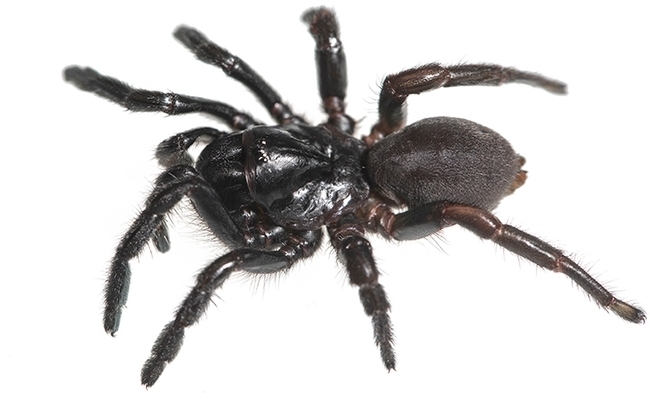
This is the female of the species,Cryptocteniza kawtak. (Image by Jason Bond)
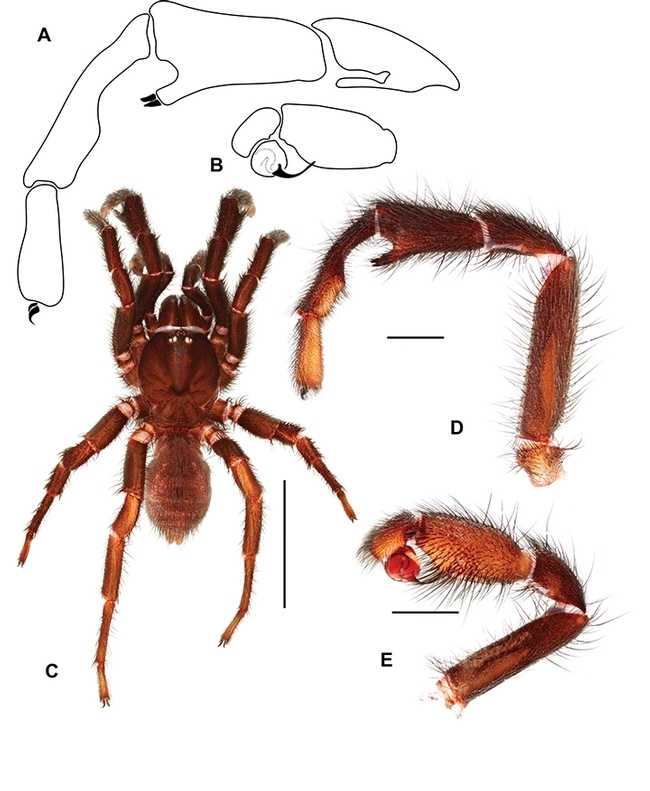
This is the male of the species, Cryptocteniza kawtak. (Image by Jason Bond)

This is where UC Davis Professor Jason Bond discovered the new genus and species of a trapdoor spider. (Illustration by Jason Bond)

UC Davis alumnus Kirsten Pearsons, a "proud Aggie," surveys the Russell E. Larson Agricultural Research Center at Rock Springs; this is Penn State's research farm. She holds a doctorate in entomology from Penn State.
Name That Spider--And Did They Ever!
When UC Davis Professor Jason Bond discovered a new genus of trapdoor spiders in Monterey County and issued a call for folks to name...
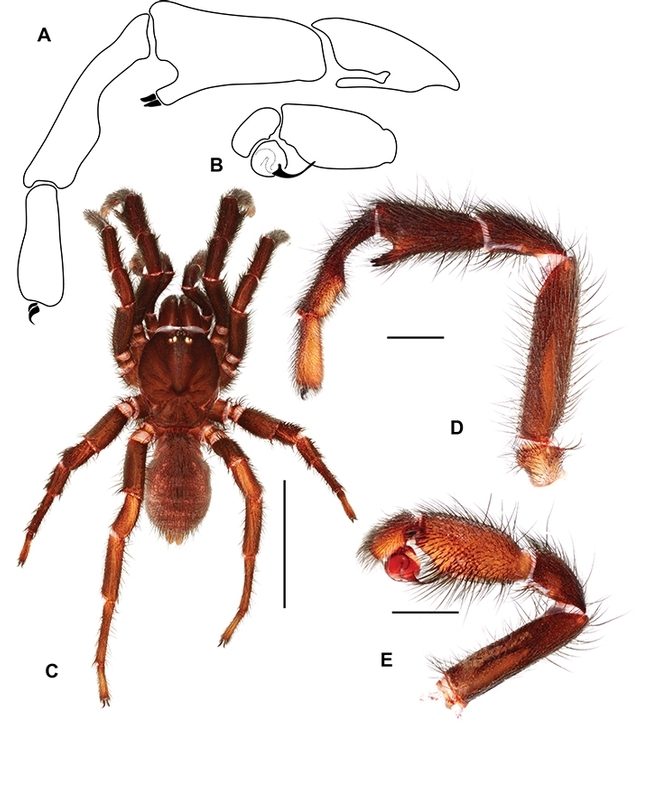
This is male of the species of a new genus of trapdoor spiders that UC Davis professor Jason Bond discovered in Monterey County. Bond proposes to name the genus, Cryptocteniza, part of which means “hidden or secret.” (Image by Jason Bond)

This is where UC Davis professor Jason Bond discovered a new genus of trapdoor spiders. (Illustrations by Jason Bond)
Name That Spider!
Name that spider! UC Davis professor Jason Bond is seeking a species name for a new genus of trapdoor spiders he discovered on a sandy beach...
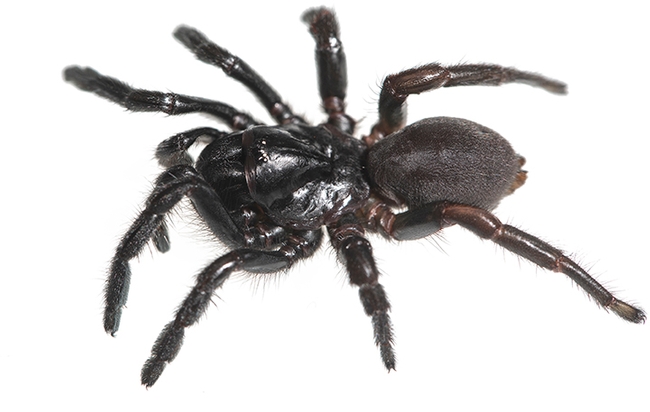
This is the female of the new genus, Cryptocteniza. (Image by Jason Bond)
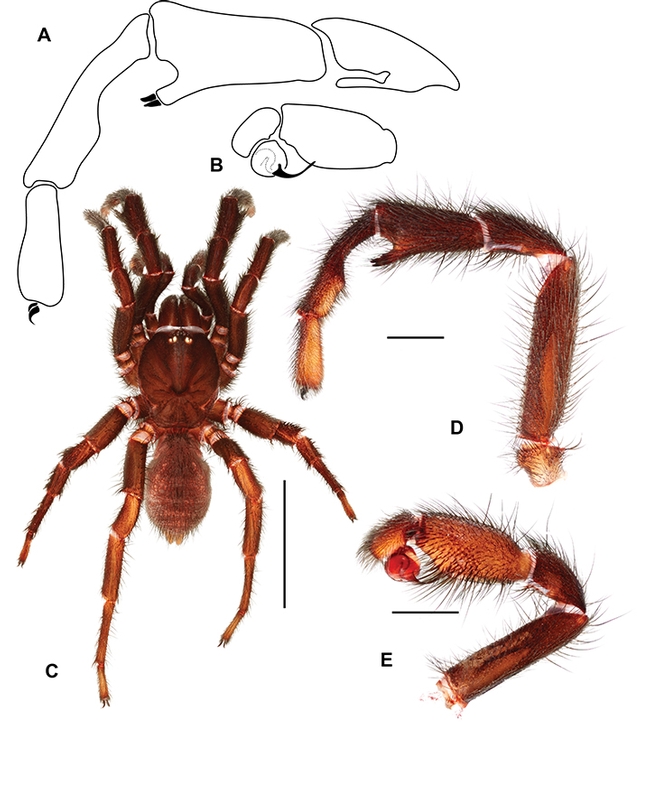
This is the male of the new genus, Cryptocteniza. (Image by Jason Bond)

UC Davis professor Jason Bond found the genus on a sandy beach at Moss Landing State Park, Monterey County. (Illustration provided by Jason Bond)
Hear That Buzz on the Red Hot Poker?
On the last few days of Year 2019, where do you find a foraging honey bee? Well, if the temperature soars to 50 or 55, you might see honey bees slip...
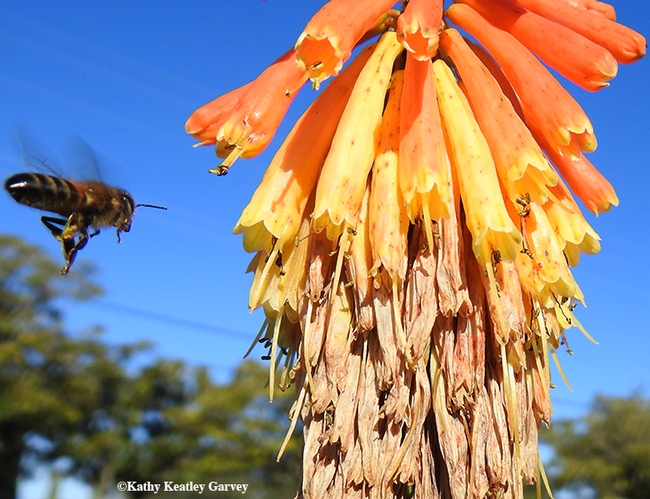
A honey bee heads for a winter flowering plant, Kniphofia, in Napa, on Saturday, Dec. 28. (Photo by Kathy Keatley Garvey)
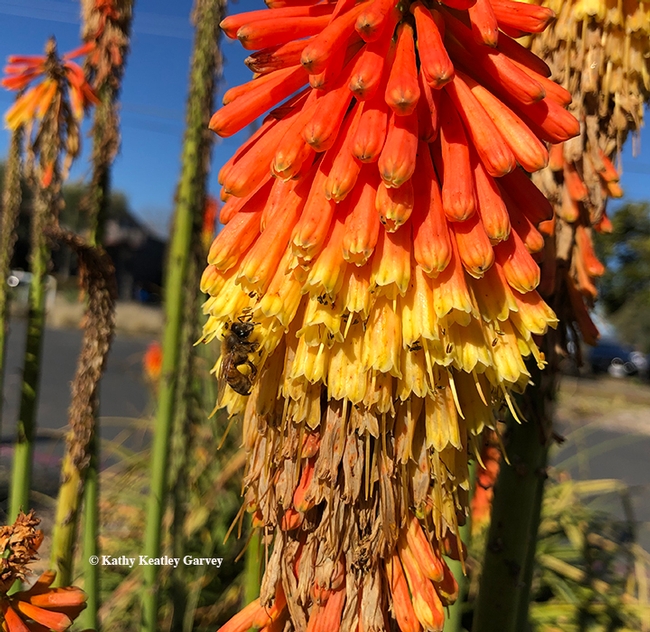
Check out the pollen on the honey bee foraging on a red hot poker (genus Kniphofia). (Photo by Kathy Keatley Garvey)
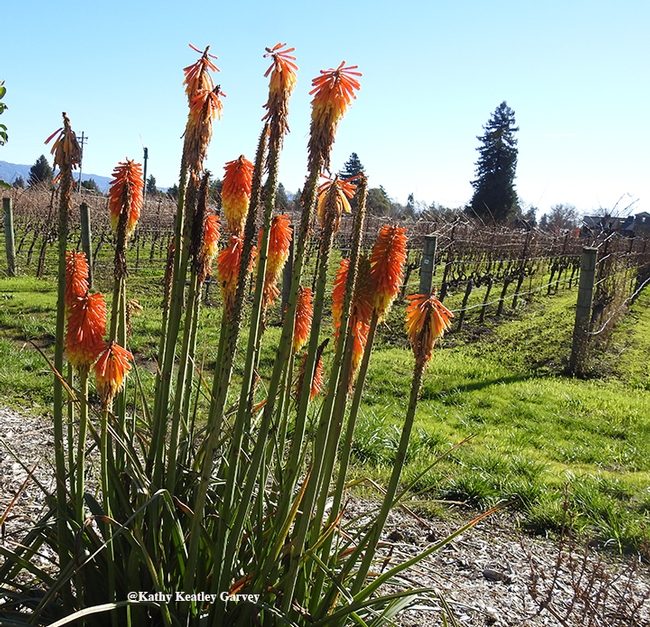
A clump of "red hot poker" or "Christmas cheer" (genus Kniphofia) brings winter cheer to a Napa vineyard. (Photo by Kathy Keatley Garvey)
Just Look, Don't Take?
When we last left Ms. Mantis, a female Stagmomantis limbata residing in our verbena patch, she was munching on a honey bee. A successful ambush...
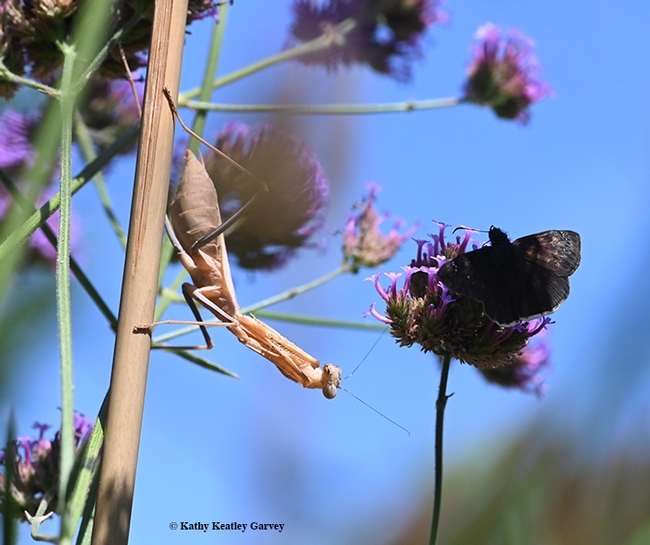
A female praying mantis, Stagmomantis limbata (as identified by praying mantis expert Lohit Garikipati of UC Davis) eyes a mourning cloak butterfly nectaring on verbena. (Photo by Kathy Keatley Garvey)
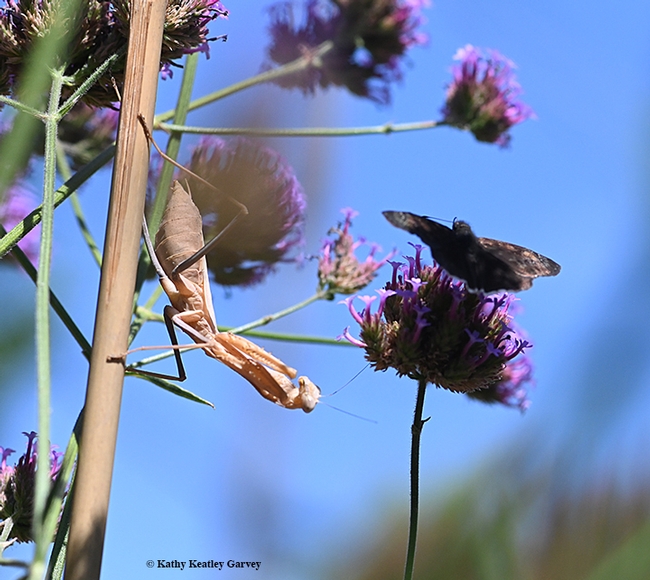
Ready, set...The praying mantis, Stagmomantis limbata, really wants this mourning cloak butterfly. (Photo by Kathy Keatley Garvey)
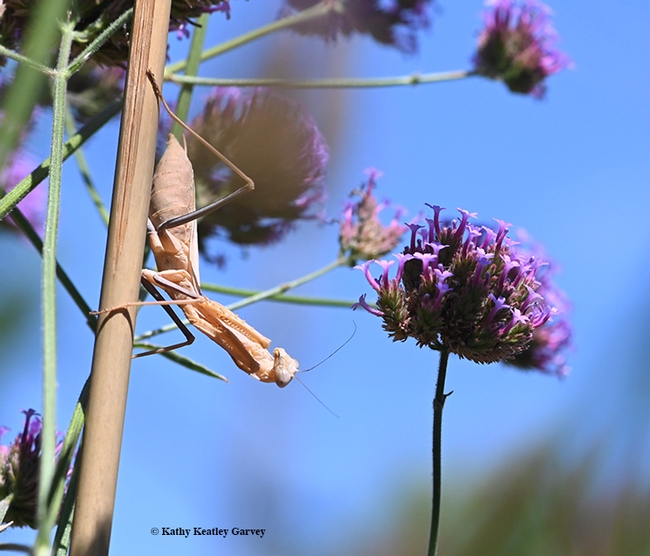
"Whoa, where did it go? It was in my sights and now it's gone." The praying mantis loses her prey. (Photo by Kathy Keatley Garvey)
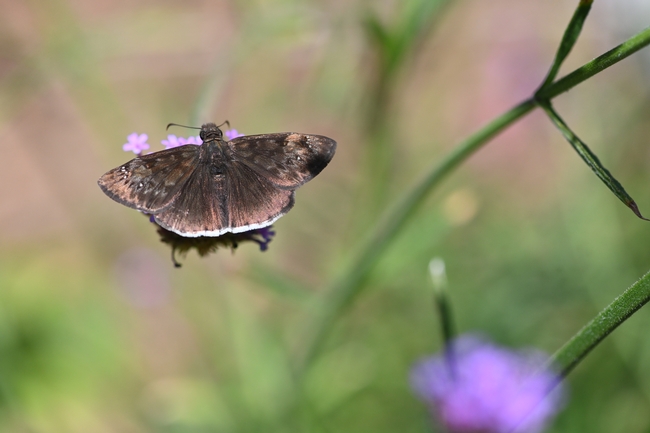
Safe and sound. The duskywing butterfly, genus Erynnis, nectars on a blossom away from the praying mantis. (Photo by Kathy Keatley Garvey)

